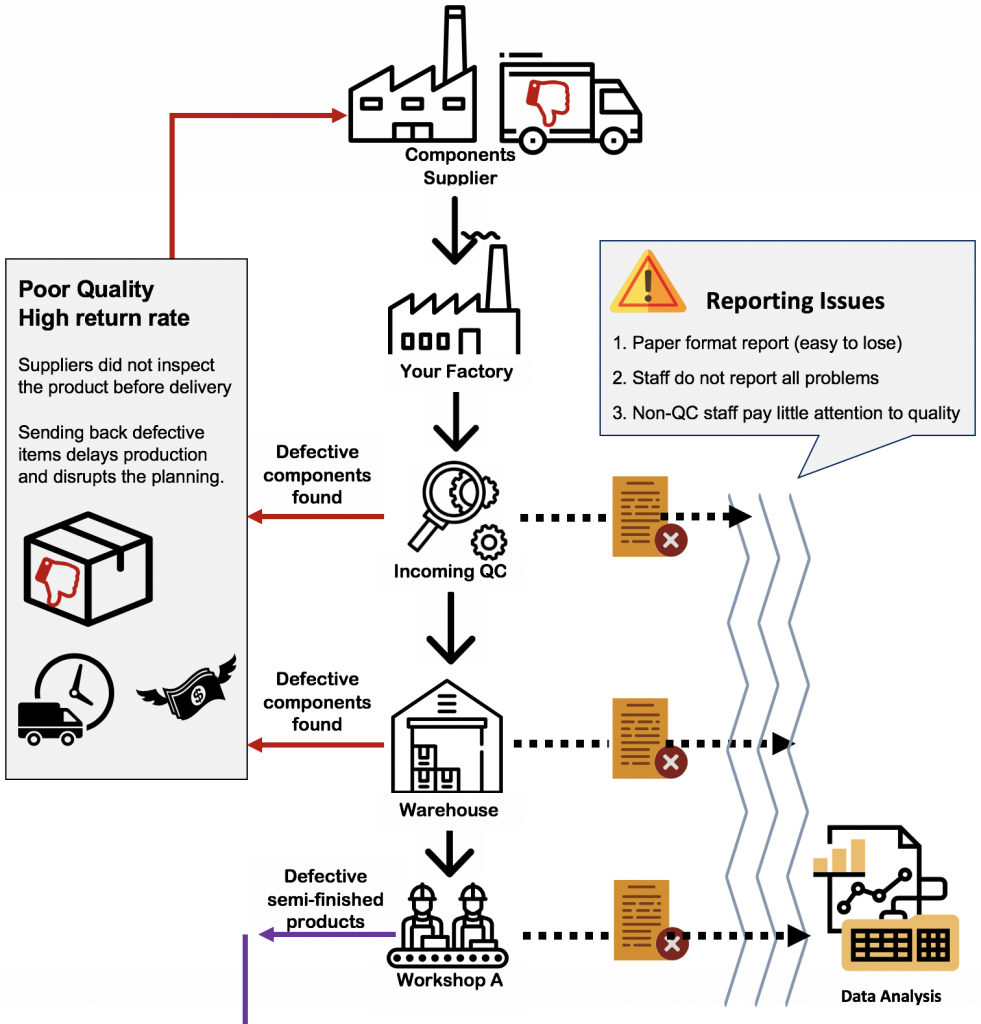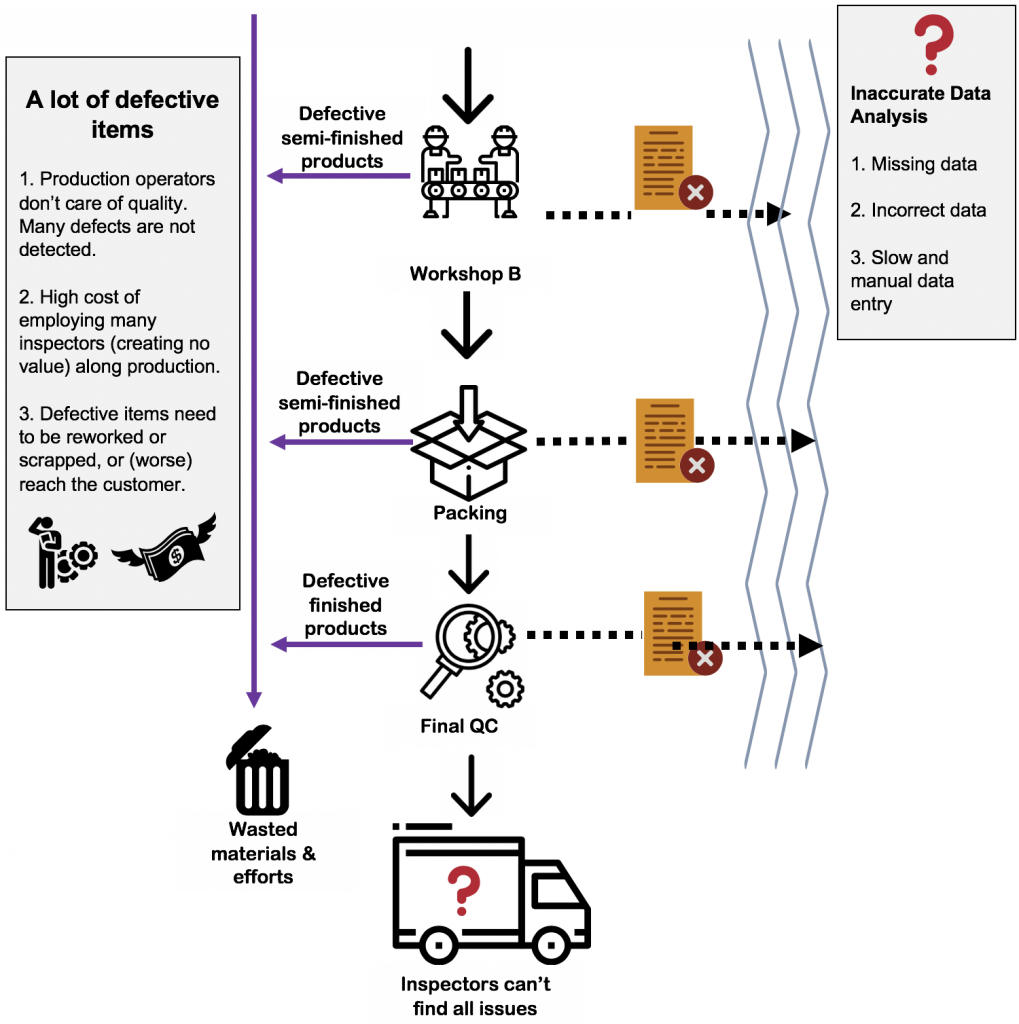 The sad truth in China is, 5% of the manufacturers are doing a good job consistently, and the rest have ups & downs that irritate and frighten Western customers.
The sad truth in China is, 5% of the manufacturers are doing a good job consistently, and the rest have ups & downs that irritate and frighten Western customers.
And, of those 5% that do a good job consistently, 0.5% do so because of good systems and the other 4.5% do so because operations are not very complex and management watches what happens carefully.
Yes, I made these numbers up. But that’s my impression after 12 years spent working here across multiple sectors (from apparel to tier-1 automotive, and from furniture to electronics). Bad suppliers quality is still a real problem in China.
But why can’t these manufacturers even STOP BAD QUALITY? Because of a series of issues in the quality systems.
Typical gaps in the quality systems of Chinese factories
We drew this simple infographic to illustrate the issues we have seen most often.
Does it sound familiar?
- Inconsistent product quality from suppliers, which causes delays and other production issues
- When inspectors do check production, they write findings on paper, and data integrity is a serious concern
- QC is only the responsibility of the QC department, and the production staff’s performance is evaluated on the basis of quantity shipped.
- The managers think “to ship fewer defective units, we need more inspectors to take the bad pieces out and it costs more”, rather than working on process controls and preventive maintenance.
- Manpower and materials are wasted in rework and scrap.
- Data analysis is quite difficult. It requires a lot of data entry, and is ready days after an issue has appeared.
- No systematic feedback to the previous process, or to external suppliers.
- Not all issues are caught. Customers are never sure their standard will be respected.
Is this what you see in your suppliers’ factories?
—-
Side note: the manufacturers that are adopting an IT system such as SynControl are addressing precisely all these issues.



No mention of the zero-sum mentality? The idea among Chinese that, if you are winning, they must necessarily be losing?
I believe this to be why middle managers deliberately introduce problems into production. They just can’t understand that if you get what you want, it doesn’t mean they lost. The only way to win is to ensure that the other guy is losing.
Wow. Aren’t you overly negative about Chinese suppliers? 🙂
Yes, they have a zero-sum mentality. But I don’t think they see delivering good quality as losing, as long as they feel they got compensated fairly (e.g. at a fair price).
Now, do they “salt” rejected parts in the batch just before shipment? Yes, this is common, and it drives foreign buyers nuts. I obviously have no statistics about this, but I’d guess most Chinese factories have done that at one point or another.
I am a Chinese and had worked in a Chinese glove factory for many years, I know how it looks like in my industry.
Sometimes, bad quality is not necessarily because they have a bad quality system. It all starts from customer need. You know customers are constantly looking for lower price products, customers from middle east and east Europe count on low prices. To compete, one thing factories do is to get rid of inspection process which consumes labor cost and some other material cost. If you put inspection step into the production, cost will go much higher, and no customers would possibly accept it. But no inspection in production is not a problem for some customers because price matters most for them.
Yes, that’s a sad reality when the factory makes no effort to “build quality in” — it means they need to “inspect it out” and it’s expensive…